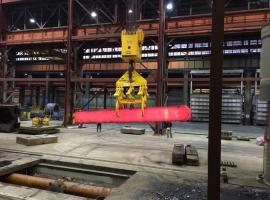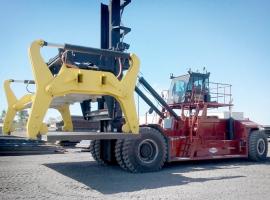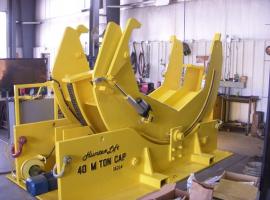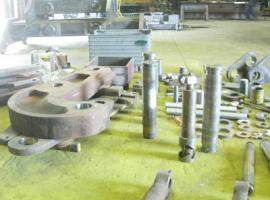Improper use can lead to serious injury or death. In this post, we'll go over some basic safety tips to help keep you safe while using below-the-hook lifting devices. Stay safe out there!
Tips to Safely Operate Below the Hook Lifting Devices
Operating a below-the-hook lifting device can be a dangerous proposition if the proper safety precautions are not taken. Below are some safe practices operators should take while lifting with these devices:
Make Sure the Staff is Properly Trained
One of the most important aspects of safely operating below-the-hook lifting devices is ensuring the staff is properly trained. While some employees may have previous experience with similar devices, it is important to ensure that everyone is familiar with the specific device being used and its capabilities. The best way to do this is to provide comprehensive training that covers all aspects of the device, including its use, limitations, and emergency procedures.
Inspect the Area Around the Lift Site
When you are operating below the hook lifting devices, it is essential to inspect the area around the lift site for potential hazards. This includes looking for loose debris, sharp objects, or anything else that could potentially cause damage to the equipment or injure workers. By taking a few moments to perform this inspection, you can help ensure a safe and successful lift.
Never Exceed the Load Capacity for the Device
Following the manufacturer's weight limit recommendations is always important when using any below-the-hook lifting device. Exceeding the capacity can stress the device, leading to breakage or other damage. It is also important to note that many devices have a lower weight limit when used at full extension.
Additionally, make sure that the load is properly secured. Use proper lifting techniques when attaching and lifting loads and not try to lift something that is not properly secured.
Be Aware of Your Surroundings
No matter what type of below-the-hook lifting device you use, you must always be aware of your surroundings. If anything changes, such as wind picking up or a load shifting, stop the lift immediately and assess the situation. By being aware of your surroundings, you can help prevent accidents and injuries.
Lower the Load Slowly and Carefully
Lower the load slowly and carefully while operating lifting devices. If the load shifts or begins to swing, stop the lift immediately and assess the situation. Never try to correct a shifting or swinging load while the lift is in progress. Doing so could result in severe injury or damage to property.
Once the load is in place, secure it before moving to another location or releasing it from the device. Additionally, ensure not to leave a load unattended while it is still attached to the device.
Bottom Line
It’s all about safety measures that operators must consider while operating a below-the-hook lifting device. With these things in mind, the operator will be sure to have success when lifting and moving heavy objects.
If you're an employer of an industry that makes ample use of below the hook lifting devices, there are a few things to keep in mind. First and foremost, ensure that your team uses the proper safety equipment and practices when operating your lifting devices. Improper use can lead to serious injury or death. In this post, we'll go over some basic safety tips to help keep you safe while using below-the-hook lifting devices. Stay safe out there!
Search
categories
- Select...
- Safety (13)
- Lifting Equipment (12)
- Company (6)
- Materials (5)
- Education (4)
- Services (3)
- Industries (3)
- News (3)
- Cranes (2)
- History (1)
Recent Posts
Comprehensive Guide to Below the Hook Lifting Devices The 6 Advantages of Below The Hook Lifting Devices The Keys to Safety and Design Requirements of Below-the-Hook Lifting Devices Why Below the Hook Lifting Devices Are Essential to Lifting? Requirements for Below the Hook Lifting Devicesarchives
- April 2023 (1)
- January 2023 (1)
- October 2022 (1)
- September 2022 (1)
- August 2022 (3)
- July 2022 (3)
- July 2017 (1)
- June 2017 (1)
- May 2017 (1)
- April 2017 (1)
- January 2017 (1)
- December 2016 (1)





